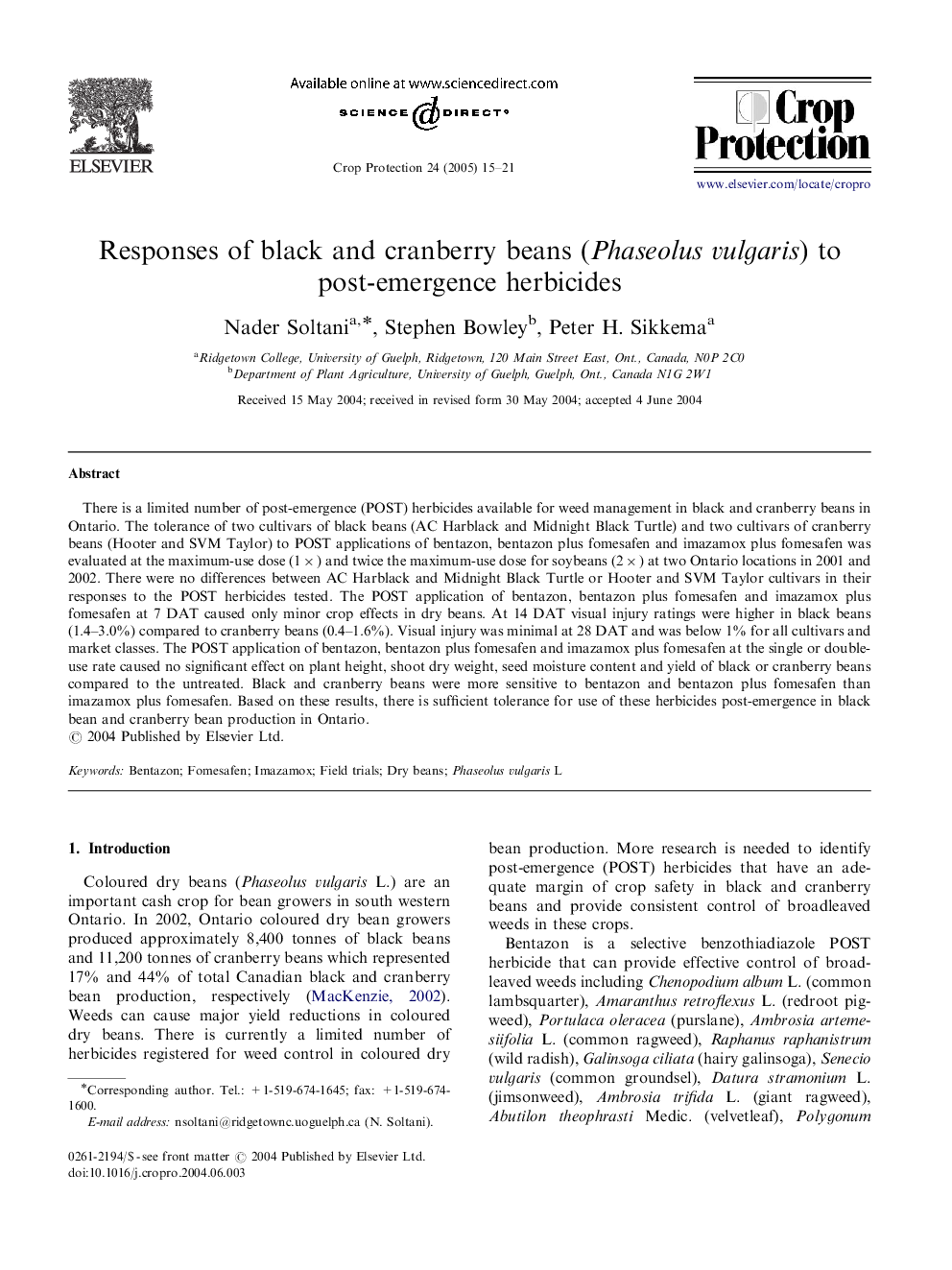| Article ID | Journal | Published Year | Pages | File Type |
|---|---|---|---|---|
| 9472868 | Crop Protection | 2005 | 7 Pages |
Abstract
There is a limited number of post-emergence (POST) herbicides available for weed management in black and cranberry beans in Ontario. The tolerance of two cultivars of black beans (AC Harblack and Midnight Black Turtle) and two cultivars of cranberry beans (Hooter and SVM Taylor) to POST applications of bentazon, bentazon plus fomesafen and imazamox plus fomesafen was evaluated at the maximum-use dose (1Ã) and twice the maximum-use dose for soybeans (2Ã) at two Ontario locations in 2001 and 2002. There were no differences between AC Harblack and Midnight Black Turtle or Hooter and SVM Taylor cultivars in their responses to the POST herbicides tested. The POST application of bentazon, bentazon plus fomesafen and imazamox plus fomesafen at 7 DAT caused only minor crop effects in dry beans. At 14 DAT visual injury ratings were higher in black beans (1.4-3.0%) compared to cranberry beans (0.4-1.6%). Visual injury was minimal at 28 DAT and was below 1% for all cultivars and market classes. The POST application of bentazon, bentazon plus fomesafen and imazamox plus fomesafen at the single or double-use rate caused no significant effect on plant height, shoot dry weight, seed moisture content and yield of black or cranberry beans compared to the untreated. Black and cranberry beans were more sensitive to bentazon and bentazon plus fomesafen than imazamox plus fomesafen. Based on these results, there is sufficient tolerance for use of these herbicides post-emergence in black bean and cranberry bean production in Ontario.
Related Topics
Life Sciences
Agricultural and Biological Sciences
Agronomy and Crop Science
Authors
Nader Soltani, Stephen Bowley, Peter H. Sikkema,
